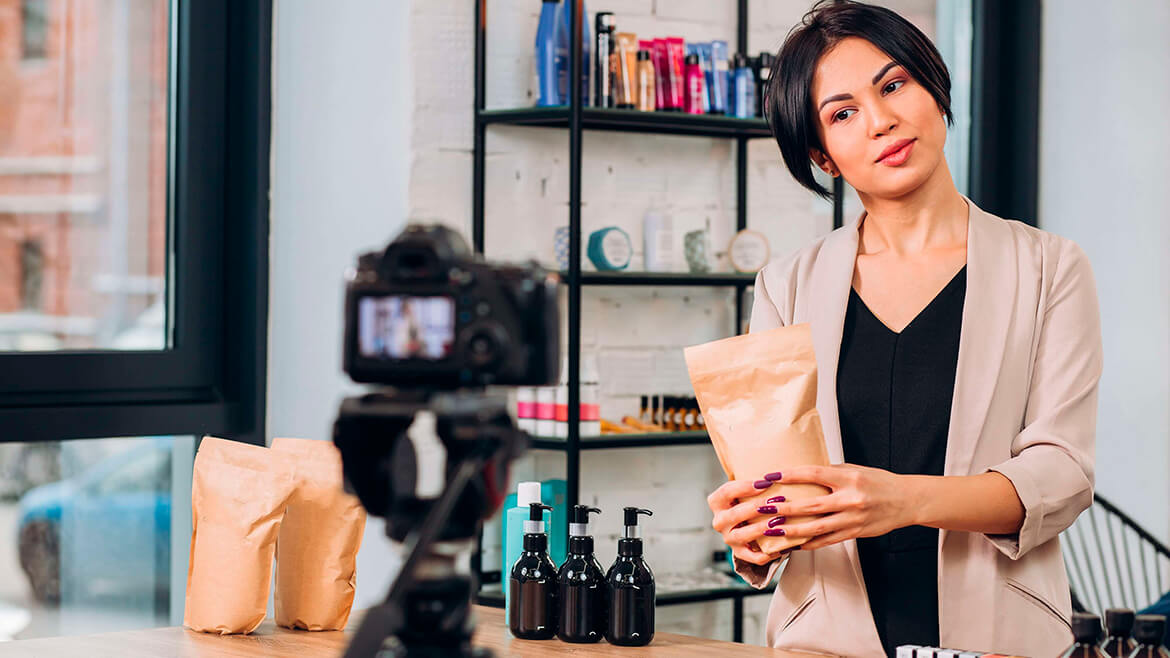Understanding the Influence of Social Media Algorithms

By Greg Bailie
In February 2021, a UK-based frozen dessert brand - Little Moons - experienced a 700% increase in
sales - during winter. The reason? TikTok. Users were filming themselves buying (and trying) these
delectable little mochi balls, and soon the craze was on.
What is exceptional about the platform is that these crazes are not isolated incidents. They are what
define TikTok and its user base. For example, during lockdown, a viral ‘whipped coffee’ craze gripped
TikTok users, with thousands of people becoming home baristas and whipping up instant
cappuccinos thanks to short, snappy TikTok tutorials.
In the Wipe It Down challenge, people filmed themselves cleaning their houses. Who would have
thought watching other people making cappuccinos or cleaning their homes could be so much fun?
TikTok’s user base thrives on creativity, and the app taps into all of our senses, combining sound,
sight and our emotions, which is why, whenever a new trend takes over, people easily find
themselves spending countless hours watching some of the most innovative videos ever produced.
TikTok’s reach is far greater than its one billion users, however. Many trends today begin on the
platform (thanks to the amazing in-app AR features enabling anyone to be a creative superstar) but
soon spread to Facebook, Instagram and messaging apps like Whatsapp.
That’s because what is happening in TikTok is not only shaping other platforms but giving ordinary
people the opportunity to define new subcultures. The platform leans on its creatives and closes the
loop through a new, uniquely TikTok creation: Community Commerce. As TikTok’s Creator Preferred
Agency Partner, this is something both the brands and influencers who we work with at Webfluential
are tapping into.
We’ve all become attuned to how social commerce functions as the cross-over between social media,
marketing and making purchases, but TikTok has taken this a step further, creating Community
Commerce, a space where users actively promote their favourite brands to each other, accelerating
the entire buying cycle through trust, authenticity and awesome content.
Community Commerce has become so successful because TikTok recognises that creator-driven
word-of-mouth marketing is incredibly powerful, largely because social media users are looking for full
online experiences, and that includes discovering new brands through to purchase in a frictionless,
fun shopping experience.
#TikTokMadeMeBuyIt is such a popular hashtag – and covers everything from cleaning products and
homeware to juicers and milk frothers – that many international retailers have even created
#TikTokMadeMeBuyIt sections so that shoppers can easily find products they’ve seen on the app.
The real secret behind Community Commerce is rooted in the creative. Google Lab’s research
suggests that creative accounts for 70% of a campaign’s performance. With that in mind, it’s worth
considering what type of creative content resonates with people.
Social media and the way influencers share their favourite products and hobbies has changed the
way we discover new things. Eighty-three percent of users discover new products and services while
they’re browsing their social media feeds, 81% research products or services on social media
platforms and 80% decide whether to buy a product or service.
Nielsen’s research shows that 9 out of 10 people trust organic user-generated content over traditional
or typical brand communications. That means they would rather hear from an influencer endorsing a
brand than from the brand itself.
Great content grabs attention by building excitement, driving anticipation, and making cultural
connections, which links back to authenticity. This is content that we trust, and as we know, people
are more likely to trust recommendations from a friend, family member or influencer on social
platforms.
Lighting, the quality of a camera, hair, makeup and trained actors and actresses used to be the gold
standard. Today, content that trends often celebrates imperfections and has been created from a
smartphone. There’s no pressure to be perfect and anyone can join in the fun. Even more surprising?
People will engage more with a mom sharing her real experience with her toddler at a restaurant, than
with a celebrity’s official Instagram account – and, as we’ve seen, they’re more likely to make a
purchase based on our quirky mom’s recommendation over Angelina Jolie’s endorsement.
Not convinced? Research from Matter Communications shows that only 17% to 22% of consumers
prefer celebrity influencers over personalities seen as either aspirational, relatable, expert or ‘just for
fun’.
Brands today have almost unlimited access to target their consumers. All you need to do is segment
your market, understand who you want to engage with and then identify the creators they resonate
with. Top posts can then be promoted to reach an even broader audience across different platforms.
Leaning into influencer marketing helps build brand love, increases ad recall and ultimately drives
sales, particularly leading up to the festive season and summer.
Find this content useful? Let's connect.
Building real connections with your audience starts with you and theSalt lets chat

Greg Bailie
Greg Bailie, Head of Growth & Innovation at Nfinity Media